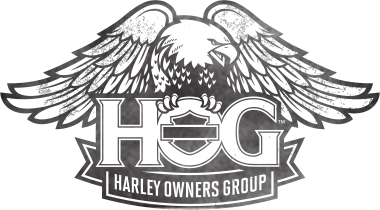Revvin' Up the Groundswell
From
it's humble beginnings in a small shed in Milwaukee , Wisconsin
Back in 1903, William
S. Harley and his brothers Arthur and Walter Davidson made a simple bike with the goal of selling it among some competition of local motorcycle marques. At first, they
marketed just engines in the Cycle and Automobile Trade Journal to 'do-it-yourself' mechanics because they
hadn't yet developed a proper frame for the bike. But by April of 1905,
production of complete motorcycles was taking place and in that same
year, Carl H. Lang (a.k.a. the first Harley-Davidson
dealer) managed to sell 3 of the 5 cycles produced from the brother's
backyard, Milwaukee
 The company's sales started to increase as their brand grew into the hearts of
The company's sales started to increase as their brand grew into the hearts of
Things
seemed to be going wonderfully. That is, until the 60's hit and management
changed. The Harley company merged with American Machine and Foundry (AMF), who "bought the company, streamlined production, and
slashed the workforce." The reputation of the hardworking
brothers who built the company was being cut back, with even brand loyalists
mocking the "Harley-Davidson" name by referring to the
bikes as "Hardly Ableson" because they
were "hardly driveable" due to the merger's new ways of
production that greatly decreased the performance of the vehicle.
At this low point in their
company's history, Harley Davidson (HD) had to find a way out of this business slump and
get back on top of the market. In their book "Groundswell: Winning in a World Transformed by Social
Technologies", authors Charlene
Li and Josh Bernoff give advice on how to tap into the groundswell by listening to, talking to, energizing,
and helping customers from all over the country (or even the
world!).
Harley Davidson was able to hit all these
notes by crafting a consumer driven circle around their product. The "Harley Owners Group," later dubbed
"H.O.G.," was a place where owners of Harley Davidson bikes bound
themselves with others who shared their passion for riding.
Creating a community was crucial at this turning point of management in the company. The presence of a community encourages interaction, both consumer-to-consumer but also company-to-consumer, and vice versa. It allowed the Harley Company to be able to easily reach out to the people who are most supportive of the company and gave them the ability to quickly receive feedback on ideas or new products from active HOG-ers.
 |
| Members of the"Thunderbird" HOG Chapter |
 |
| Members of Miami's HOG Chapter |
 |
| Members of the Fairfax. VA HOG Chapter |
A significant part of energizing the
groundswell is participating in and exhilarating the community by providing
incentives. In Chapter 7, Li and Bernoff highly suggest turning these unsung heroes of brand representing into an integral part of the company's products and processes. Energizing leads to embracing. Being a H.O.G member gives you access to benefits designed exclusively for paying
members of the community, such as roadside assistance, access to H.O.G social
events, admission to the Harley
Davidson Museum
 By opening up to collaboration, the Harley
Davidson company embraced these HOGers and enabled them to feel as if they were
solving problems in conjunction with the company employees. This is a form
of psychic income, which the Groundswell
authors address in Chapter 8, where people don't require
monetary compensation for this work, but rather welcome the feelings
acceptance, recognition, and gratitude as repayment for their assisted
efforts. It's beneficial to the company in two ways; Embracement gives consumers the feelings of inclusion and influence on the company, as well as economical benefits because "it's paid in love, not money."
By opening up to collaboration, the Harley
Davidson company embraced these HOGers and enabled them to feel as if they were
solving problems in conjunction with the company employees. This is a form
of psychic income, which the Groundswell
authors address in Chapter 8, where people don't require
monetary compensation for this work, but rather welcome the feelings
acceptance, recognition, and gratitude as repayment for their assisted
efforts. It's beneficial to the company in two ways; Embracement gives consumers the feelings of inclusion and influence on the company, as well as economical benefits because "it's paid in love, not money."
Your brand is whatever we, the customers, say it
is. That's why it's so important to listen to the groundswell and investigate
what people are saying about your company. During the AMF era, when people were
mocking the very name that they had previously loved so dearly, Harley listened and
determined what the customers wanted to change. Li and Bernoff reminds us
in Chapter 5 that there should be a
senior person to oversee that all of the data (ie. the suggestions that the
groundswell is making for progress to occur) that is coming in is being
analyzed properly and the information gained is actually being put into
practice. There is no point to listening if you are just going to let the
ingenious ideas fall through the cracks.
The Harley Davidson company has come a long way since it's humble beginnings, selling nearly a quarter million motorcycles this year alone. It has overcome it's time on the 'brink of death' and through tapping into the groundswell, their company has found success.
What advice do you think other 'traditional' companies can take from this American classic? How can time-honored brands rev up the groundswell in the new age of social media?
Let me know in the comments!



Alyssa, I really liked reading your post this week. It is funny because I also wrote about Harley Davidson and the H.O.G this week! I think we made similar points regarding their use of communities to engage the groundswell. Great job.
ReplyDelete